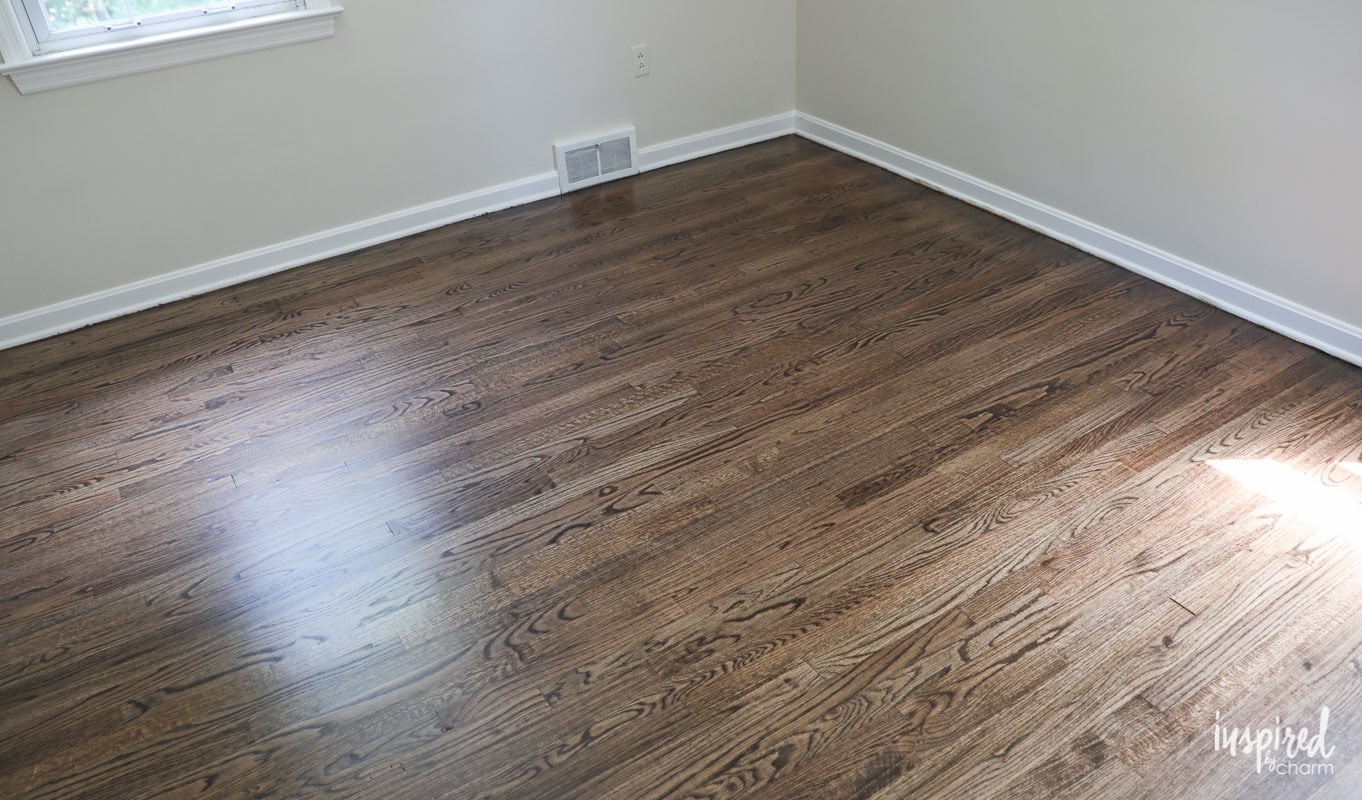Have you ever admired a friend’s dark and sophisticated hardwood floors and wondered if you could achieve the same look in your own home? The good news is, with a bit of planning and effort, it’s entirely possible to transform your lighter hardwood floors into a rich, darker hue. But just like any home improvement project, it’s important to understand the process and know what you’re getting into. This article will guide you through all the considerations you need to know before you take the plunge and stain your floors darker.

Image: johnnycounterfit.com
Giving your hardwood floors a darker makeover isn’t about a quick fix or a superficial change—it’s about transforming the entire look and feel of your space. It can make a room feel more intimate, add a touch of elegance, or create a modern and dramatic ambiance. However, it’s not a decision to take lightly. Let’s delve deeper into the “how’s” and “why’s” of darkening your hardwood floors.
Understanding the Possibilities
What Kind of Wood Do You Have?
The first step is to identify the type of wood you’re working with. Different wood species react differently to stains. Some woods have a more open grain, allowing stains to penetrate deeper and achieving a darker tone more easily. Others, like maple, tend to have a tighter grain, resulting in a less dramatic color change.
The Current Finish
The existing finish on your floors also plays a crucial role. If your floors are sealed with a polyurethane or another type of coating, the stain may not penetrate as deeply. In this case, you may need to sand your floors down to the bare wood before applying the stain.

Image: www.pinterest.com
The Desired Look
What color are you envisioning? From a deep ebony to a rich mahogany, the world of wood stain colors is expansive. Do your research and sample a few different shades on scrap pieces of wood before committing to a final decision.
The How-To Guide: Staining Your Floors Darker
1. Preparing Your Floors
This is the most crucial step, as it sets the stage for a successful stain application.
- Cleaning: Thoroughly vacuum and mop the floors to remove any dirt, dust, or debris.
- Sanding: You’ll need to sand your floors to remove the existing finish and create a smooth surface for the stain to adhere to. The level of sanding depends on your current finish. If it’s a thin finish, a light sanding may be sufficient. For thicker finishes, you’ll need to sand down to the bare wood.
- Filling Gaps: If there are any noticeable gaps or cracks, use a wood filler to create a smooth, even surface.
2. Choosing Your Stain
There are several types of wood stains available, each with its own characteristics.
- Water-based stains: Quick-drying, easier to clean up, but may raise the grain of the wood.
- Oil-based stains: Penetrate deeper, producing a richer color and a more durable finish but take longer to dry.
Once you’ve selected a stain color and type, be sure to test it on a scrap piece of wood to see how it looks on your specific floor type.
3. Applying the Stain
With your floors prepared and your stain chosen, it’s time to apply.
- Even Application: Use a brush, roller, or cloth to apply the stain in thin, even coats, working in the direction of the wood grain.
- Drying Time: Allow the stain to dry completely per the manufacturer’s instructions.
- Multiple Coats: For a deeper color, you can apply multiple coats of stain. Allow each coat to dry completely before applying the next.
4. Sealing the Stain
The final step is to seal the stain to protect it from wear and tear. A polyurethane sealer is the most common choice, but other options include wax or oil-based sealers.
- Application: Apply the sealer in thin, even coats, following the manufacturer’s directions.
- Drying Time: Allow adequate drying time before walking on your newly stained floors.
Additional Considerations:
Professional Help:
If you’re not comfortable with the DIY process, consider hiring a professional floor refinisher. They have the experience and expertise to ensure a high-quality result.
Ventilation:
Work in a well-ventilated area, as wood stains can release fumes that can be harmful if inhaled.
Safety Precautions:
Wear gloves, a mask, and eye protection when working with wood stain and sealer.
Can I Stain My Hardwood Floors Darker
Conclusion: A Deeper Look at Your Home
Staining your hardwood floors darker is a transformative project that can breathe new life into your home. By understanding the process, choosing the right stain, and taking the necessary precautions, you can create a rich and sophisticated look that complements your style. Whether you choose DIY or enlist a professional, remember that proper preparation and attention to detail are essential for a beautiful and durable finish. After all, your floors are a foundation for your home, and a little care can go a long way!





